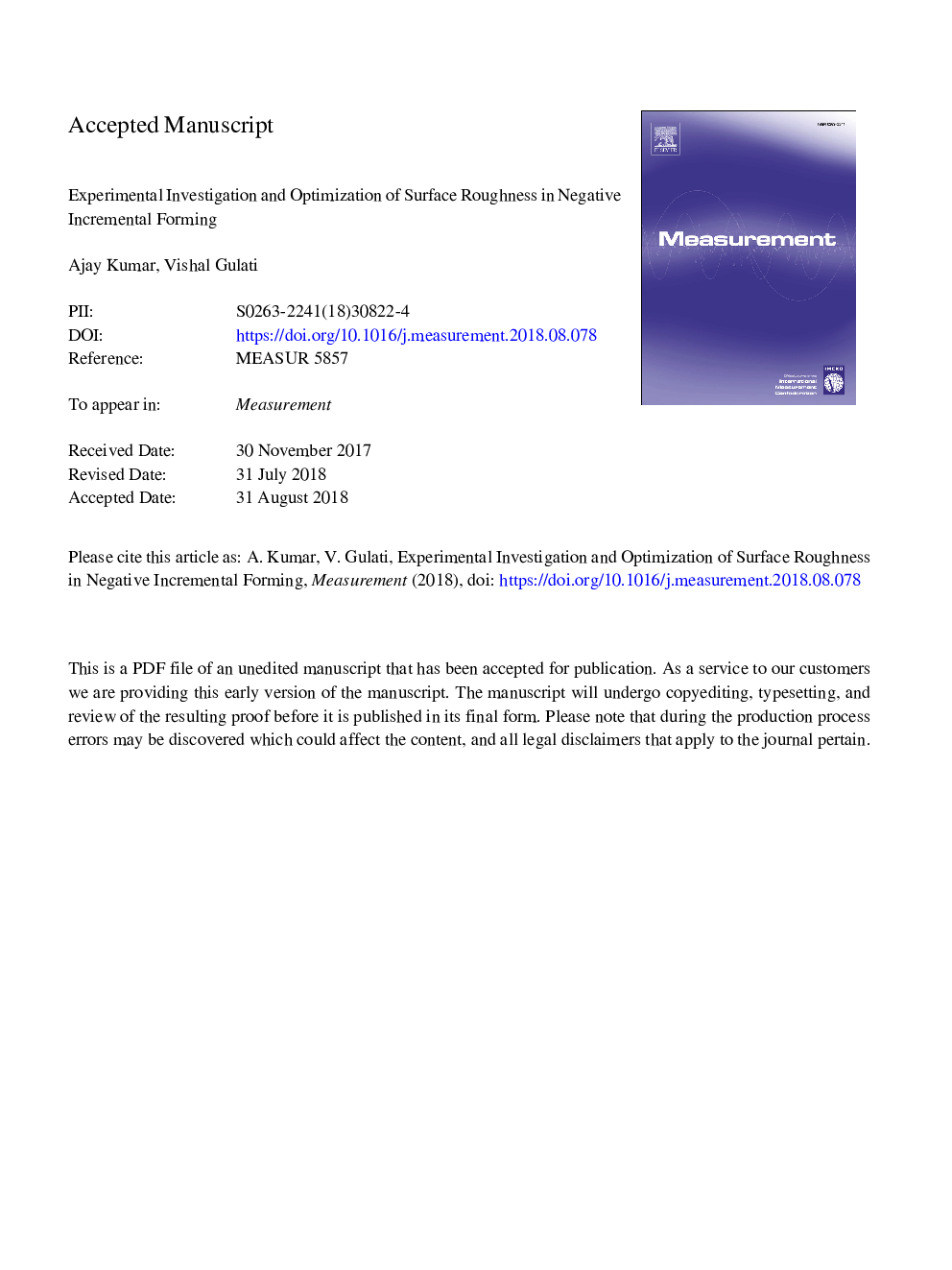| Article ID | Journal | Published Year | Pages | File Type |
|---|---|---|---|---|
| 9953679 | Measurement | 2019 | 34 Pages |
Abstract
Single Point Incremental Forming (SPIF) allows the possibility of forming components of various shapes and sizes with the use of simple and economical tooling. Investigation of surface quality of the formed components becomes necessary for selecting the optimal process parameters in order to ensure precision and safe forming of the components. Moreover, lack of available knowledge regarding the process parameters makes the process limited for industrial applications. In this paper, various input factors have been investigated on the surface roughness of formed components. The process has been optimized to obtain the optimal levels of input factors for producing better surface quality using Taguchi Method (TM) as Design of Experiment (DOE) and analysis of variance (ANOVA). Results showed that the optimal experimental condition for average roughness has been determined as tool diameter (15.66â¯mm), tool shape (hemispherical), the viscosity of the forming oil (320â¯cSt), sheet thickness (0.8â¯mm), wall angle (60°), step size (0.2â¯mm), tool rotation (1000â¯rpm), and feed rate (1500â¯mm/min). The tool diameter has been found the most dominating factor for average surface roughness of the conical frustums. Tool shape and the viscosity of forming oil have also been significant factors for average roughness. The results obtained from confirmatory experiments showed that predictive model obtained from TM is efficient and effective for estimating optimal levels of input parameters for producing the better surface quality during the SPIF process.
Related Topics
Physical Sciences and Engineering
Engineering
Control and Systems Engineering
Authors
Ajay Kumar, Vishal Gulati,
